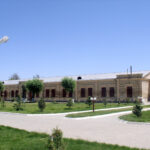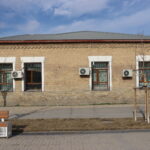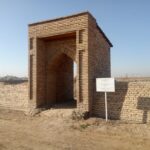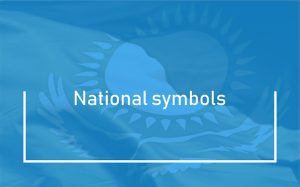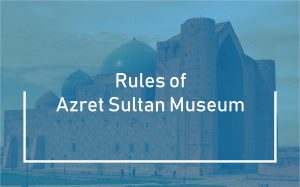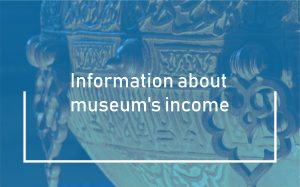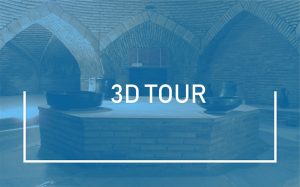In the courtyard of a private house in the village of Abay, Tulkubas district, Turkestan region, a medieval tombstone and the site of a monument that had been set up for saints have been discovered. The tombstone, which holds information about a person’s life, was kept underground for many centuries.
In this regard, employees of the State Historical and Cultural Museum-Reserve “Azret Sultan” within the scientific and cognitive expedition “In the footsteps of Yassawi” visited the aul Abay and got acquainted with the historical site.
A tombstone keeping secrets was found in 2018 in the yard of Doszhan Kydiraliyev, a resident of Abay village. When the owners of the house guessed that it was a valuable find, they turned to specialists who can read ancient inscriptions.
Scientists led by the famous scientist Zaripbai Orazbaiuly, a specialist in Arabic, Persian and ancient Turkic language, studied the inscription on the tombstone and identified the Arabic letters of the Kufi sample. The inscription read: “This is the tomb of Mohammed Nuran Baba”.
As is known, tombstones are placed in burial sites. That is why archaeological excavations were carried out under the guidance of scientists-archaeologists of the International Turkic Academy, Napil Bazylkhan and Nurbolat Bogenbayev. The scientists gave the name to this monument according to the ancient name of this region “Aldibastau Auliessi”.
As a result of archaeological excavations, it was determined that in this place there was a structure with an area of 4 m, width 1.65 m, wall height of about 2 meters. The walls of the monument are made of stones from the river Kokbulak and fixed with clay.
During the excavations a number of archaeological artifacts of metal, bones, ceramics and glass were discovered.
The scientific research of the found objects allowed us to conclude that this is a monument to the saint “Mohammed Nuran Baba”, who lived in the Kazakh steppe around the X-XI centuries and conducted religious and educational activities.
During the excavations, water rose here, which prevented the continuation of the work. Nevertheless, various artifacts uncovered from under the ground, and the foundations of construction sites have revealed much. Scientists speculate that there is a grave here, as the tombstone is set in an upright position.
«A tombstone is placed on a grave. This monument needs to be thoroughly investigated. In my opinion, the grave of Mohammed Nuran Baba is 1.5-2 meters deep under the tombstone. Unfortunately, everything was flooded with water. Perhaps the person to whom the tombstone was placed was a master. Because in the place where the excavations were carried out, I noticed the place of a huge oven. This suggests that there was a workshop next to the grave, or students in memory of the teacher continued his work next to the grave. From the pattern of the furnace and the waste around it, we can determine that there was also a place where iron was smelted. What surprised us was that the furnace was completely built of stones, including river stones, this is the first time I come across such a sample of the furnace», — says Marat Tuyakbayev, a well-known archaeologist-scientist, candidate of historical sciences.
Indeed, during the excavations, scientists found an anvil and fragments of fused iron. The steel anvil of Nuran Baba is very massive and strong. Scientists say that such an ancient anvil was found in Kazakhstan for the first time. On the surface of the anvil you can see the traces of blows with a hammer, indicating that it has been used for many years. Traces of objects being struck on the anvil can be seen.
According to legends, religious figures had their own hobbies. Arystan Bab, Lashyn Bab, Karga Bab, Yskak Bab, Zhussip Ata, Saduakas Ata and other personalities were engaged in breeding birds, some cut cattle, and others grew grapes, planted gardens. And the people called them names related to their hobby.
The word “Bab” from the Arabic translates as “door, gate”, that is, the one who opens the door to religion. Therefore, it is considered a great discovery that the tombstone, on which the word Bab was first carved, was found. In 100-150 meters from the monument «Aldibastau auliessi” there is a hill which locals consider as sacred. According to aksakals, before the spread of atheistic views, people used to gather there every Friday to read namaz and people were treated for illnesses below.
Scientists believe that this hill was the location of a religious structure.
The appearance of this hill in the village of Abay, which resembles an underground Kyluet, resembles the Kumshyk Ata Kyluet in the Turkestan city. The Kumshyk ata mosque, where the followers of Yassawi’s teachings performed their religious rites, consists of two rooms and a narrow corridor with a door at the entrance. The kyluet is in the shape of a square, lined with wet bricks, and the ceiling is designed in the form of a dome. The adjoining house was circular in shape, 2.5 meters in diameter and 2 meters high, domed. The corridor was winding, its main structure was made of burnt brick and topped with a dome.
“And above the subterranean kylway was built an earthen mosque. It is possible that this object was erected during the time of Mohammed Nuran Baba. Exactly this will be known after the study,” says archaeologist Marat Kymyzuly.
The study of the monument «Әldibastauәuliesi» found in the village of Abay is still going on.
According to the legend, the ancestor of Khoja Ahmet Yasawi Iftikhar Shaiyk is buried in the Tulkubas district in Auliyetobe. At the time of the conquests, Iftikhar Shaiyk, who took up arms in his hands, commanded the Muslim army and pursued the enemy to the present Auliyetobe. Having received a serious wound, feeling a speedy departure, he willed to bury him on a hill to become a defense against the enemy in the northern part. Since then the place has been called Turkibasy Auliye, Aulietobe. This is the history of the name of the area and it is associated with Turkibasy, that is, the ancestor of Khoja Akhmet Yassawi, experts say.


